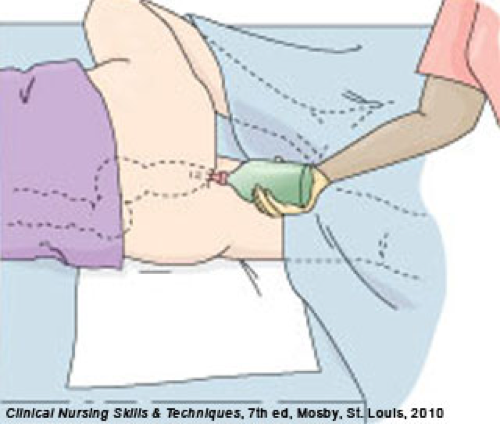If a person is having surgery on the bowel, expect him or her to also have to take medicines (e.g. GoLytely®, Colyte®, Nulytely®) to clean the entire bowel. These medicines are safe. In this case, an enema prevents “accidents” (leaking of stool) during surgery and constipation after surgery.

